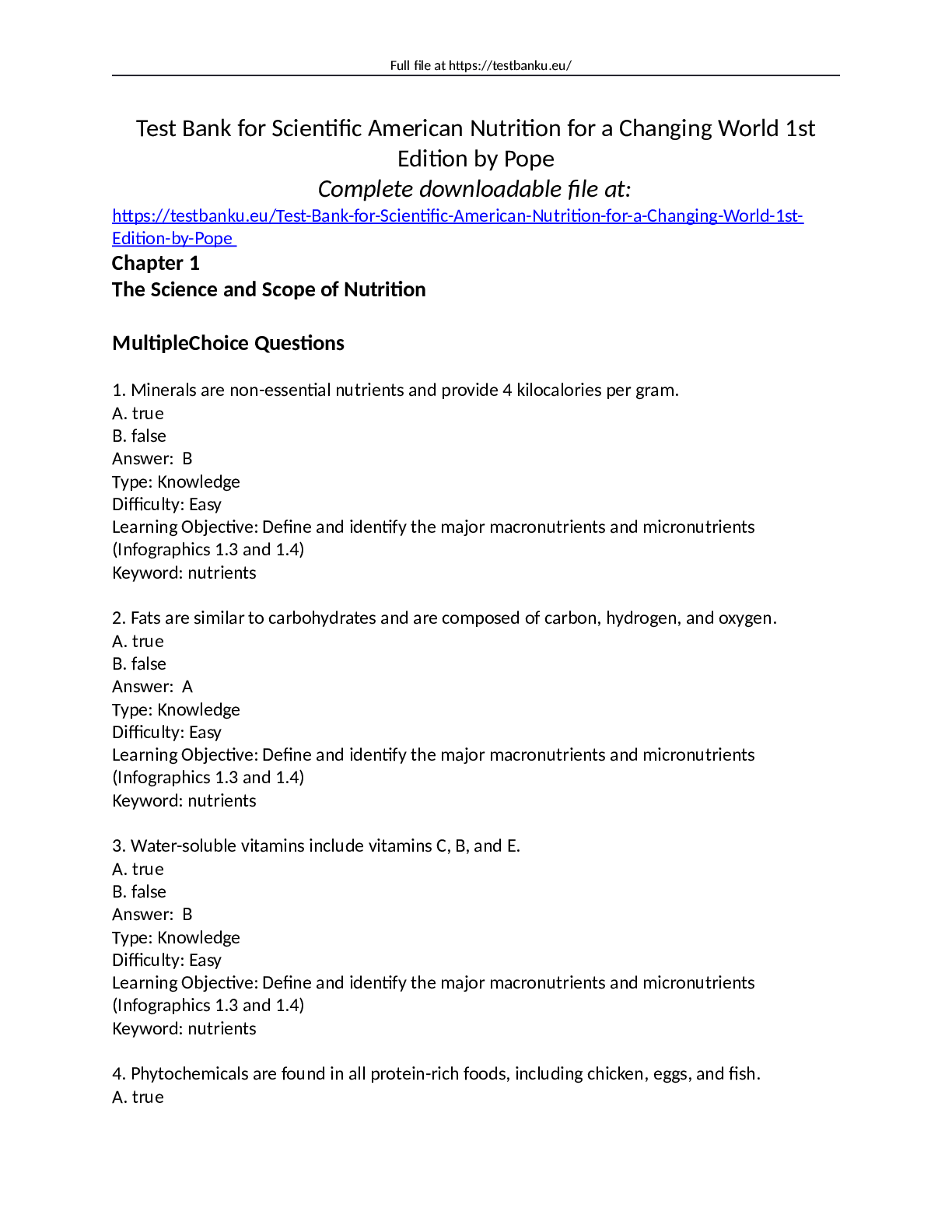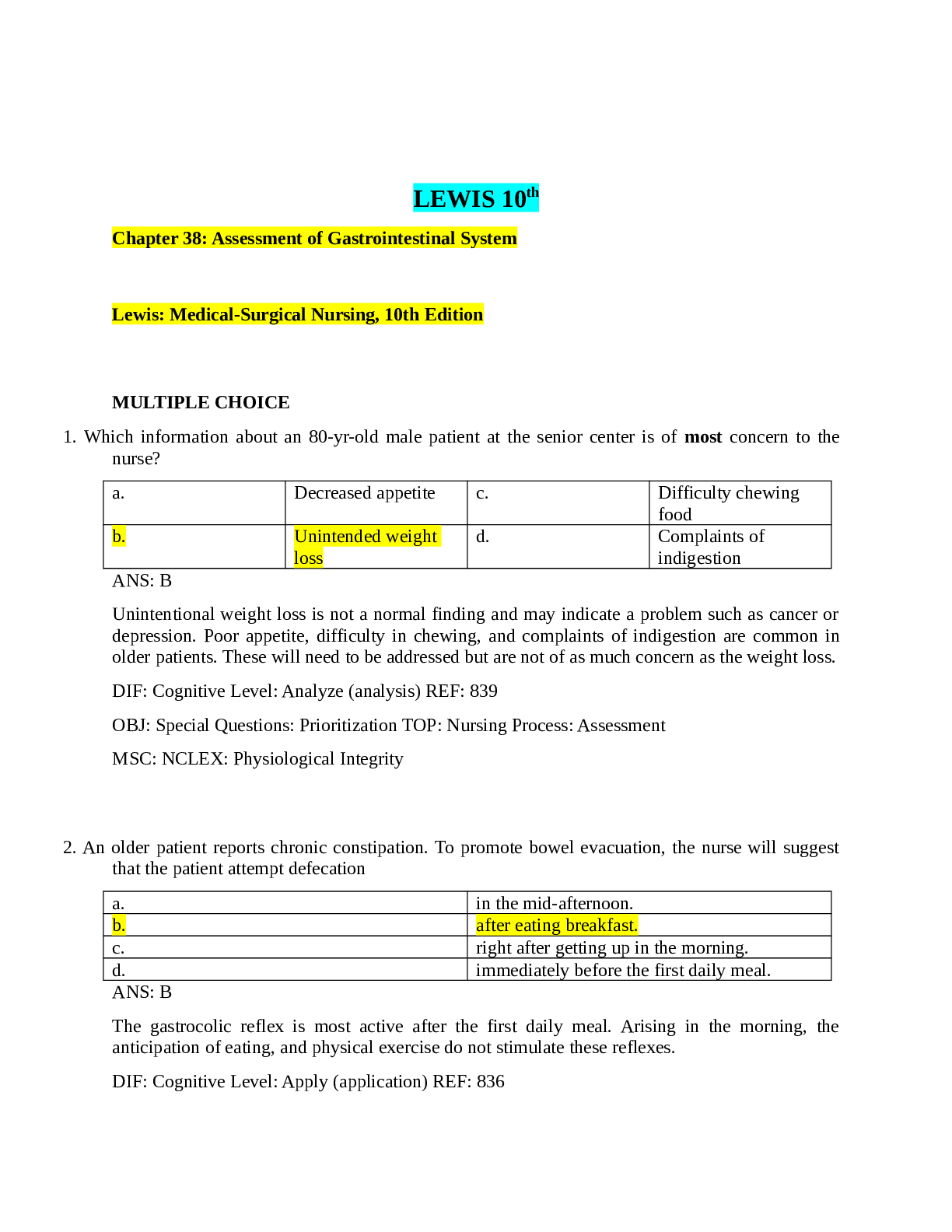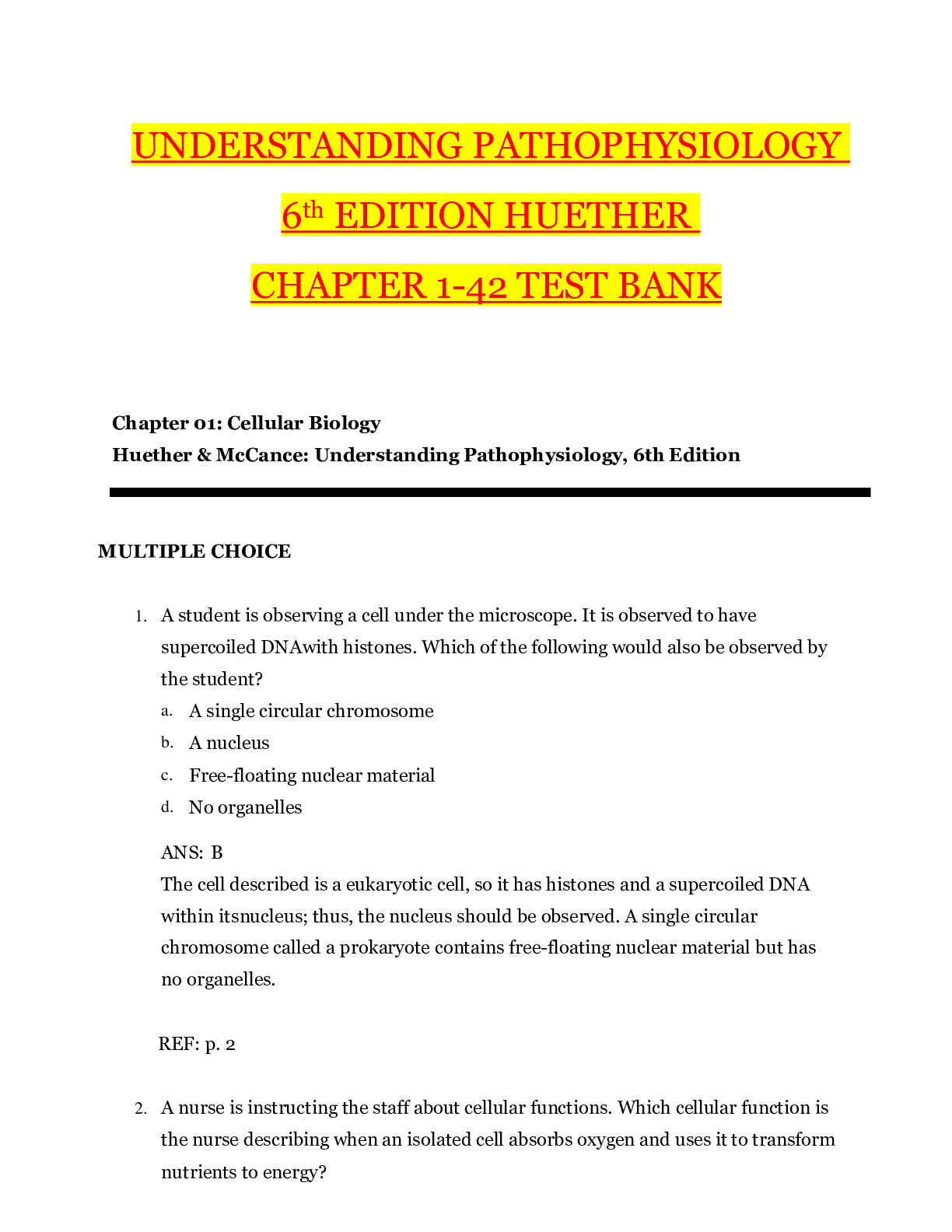Pathophysiology > TEST BANK > Understanding Pathophysiology 6th Edition Huether Test Bank|Huether & McCance: Understanding Pathoph (All)
Understanding Pathophysiology 6th Edition Huether Test Bank|Huether & McCance: Understanding Pathophysiology, 6th Edition (complete A+ guide)
Document Content and Description Below
Chapter 01: Cellular Biology Huether & McCance: Understanding Pathophysiology, 6th Edition MULTIPLE CHOICE 1. A student is observing a cell under the microscope. It is observed to have supercoiled ... DNA with histones. Which of the following would also be observed by the student? a. A single circular chromosome b. A nucleus c. Free-floating nuclear material d. No organelles ANS: B The cell described is a eukaryotic cell, so it has histones and a supercoiled DNA within its nucleus; thus, the nucleus should be observed. A single circular chromosome called a prokaryote contains free-floating nuclear material but has no organelles. REF: p. 2 2. A nurse is instructing the staff about cellular functions. Which cellular function is the nurse describing when an isolated cell absorbs oxygen and uses it to transform nutrients to energy? a. Metabolic absorption b. Communication c. Secretion d. Respiration ANS: D The cell’s ability to absorb oxygen is referred to as respiration while its communication ability involves maintenance of a steady dynamic state, metabolic absorption provides nutrition, and secretion allows for the synthesizing of new substances. REF: p. 2 3. A eukaryotic cell is undergoing DNA replication. In which region of the cell would most of the genetic information be contained? a. Mitochondria b. Ribosome c. Nucleolus d. Nucleus Cytoplasm ANS: C The region of the cell that contains genetic material, including a large amount of ribonucleic acid, most of the DNA, and DNA-binding proteins, is the nucleolus, which is located within the cell’s nucleus. Mitochondria is associated with cellular respiration, while ribosomes are involved with protein manufacturing. Cytoplasm is a fluid filling that is a component of the cell. REF: p. 2 NURSINGTB.COM Understanding Pathophysiology 6th Edition Huether Test Bank NU RS IN GT B.CO M 4. Which of the following can remove proteins attached to the cell’s bilayer by dissolving the layer itself? a. Peripheral membrane proteins b. Integral membrane proteins c. Glycoproteins d. Cell adhesion molecules ANS: B Proteins directly attached to the membrane bilayer can be removed by the action of integral membrane proteins that dissolve the bilayer. Peripheral membrane proteins reside at the surface while cell adhesion molecules are on the outside of the membrane. Glycoprotein marks cells and does not float. REF: p. 7 5. Which of the following can bind to plasma membrane receptors? a. Oxygen b. Ribosomes c. Amphipathic lipids d. Ligands ANS: D Ligands are the only specific molecules that can bind with receptors on the cell membrane. REF: p. 9 6. A nurse is reviewing a report from a patient with metastatic cancer. What alternation in the extracellular matrix would support the diagnosis of metastatic cancer? a. Decreased fibronectin b. Increased collagen c. Decreased elastin d. Increased glycoproteins ANS: A Only a reduced amount of fibronectin is found in some types of cancerous cells, allowing them to travel or metastasize. REF: p. 10 7. Which form of cell communication is used to relate to other cells in direct physical contact? a. Cell junction b. Gap junction c. Desmosome d. Tight junction ANS: A Cell junctions hold cells together and permit molecules to pass from cell to cell. Gap junctions allow for cellular communication between cells. Neither desmosomes nor tight junctions are associated with cellular communication. REF: p. 11 NURSINGTB.COM Understanding Pathophysiology 6th Edition Huether Test Bank NU RS IN GT B.CO M 8. Pancreatic beta cells secrete insulin, which inhibits secretion of glucagon from neighboring alpha cells. This action is an example of which of the following signaling types? a. Paracrine b. Autocrine c. Neurohormonal d. Hormonal ANS: A Paracrine signaling involves the release of local chemical mediators that are quickly taken up, destroyed, or immobilized, as in the case of insulin and the inhibition of the secretion of glucagon. None of the other options involve signaling that is associated with a local chemical mediator like insulin. REF: p. 12 9. In cellular metabolism, each enzyme has a high affinity for a: a. solute. b. substrate. c. receptor. d. ribosome. ANS: B Each enzyme has a high affinity for a substrate, a specific substance converted to a product of the reaction. Cellular metabolism is not dependent on an attraction between an enzyme and any of the remaining options. REF: p. 16 10. An athlete runs a mar [Show More]
Last updated: 1 year ago
Preview 1 out of 367 pages
Instant download

Buy this document to get the full access instantly
Instant Download Access after purchase
Add to cartInstant download
Reviews( 0 )
Document information
Connected school, study & course
About the document
Uploaded On
Apr 04, 2022
Number of pages
367
Written in
Additional information
This document has been written for:
Uploaded
Apr 04, 2022
Downloads
0
Views
206

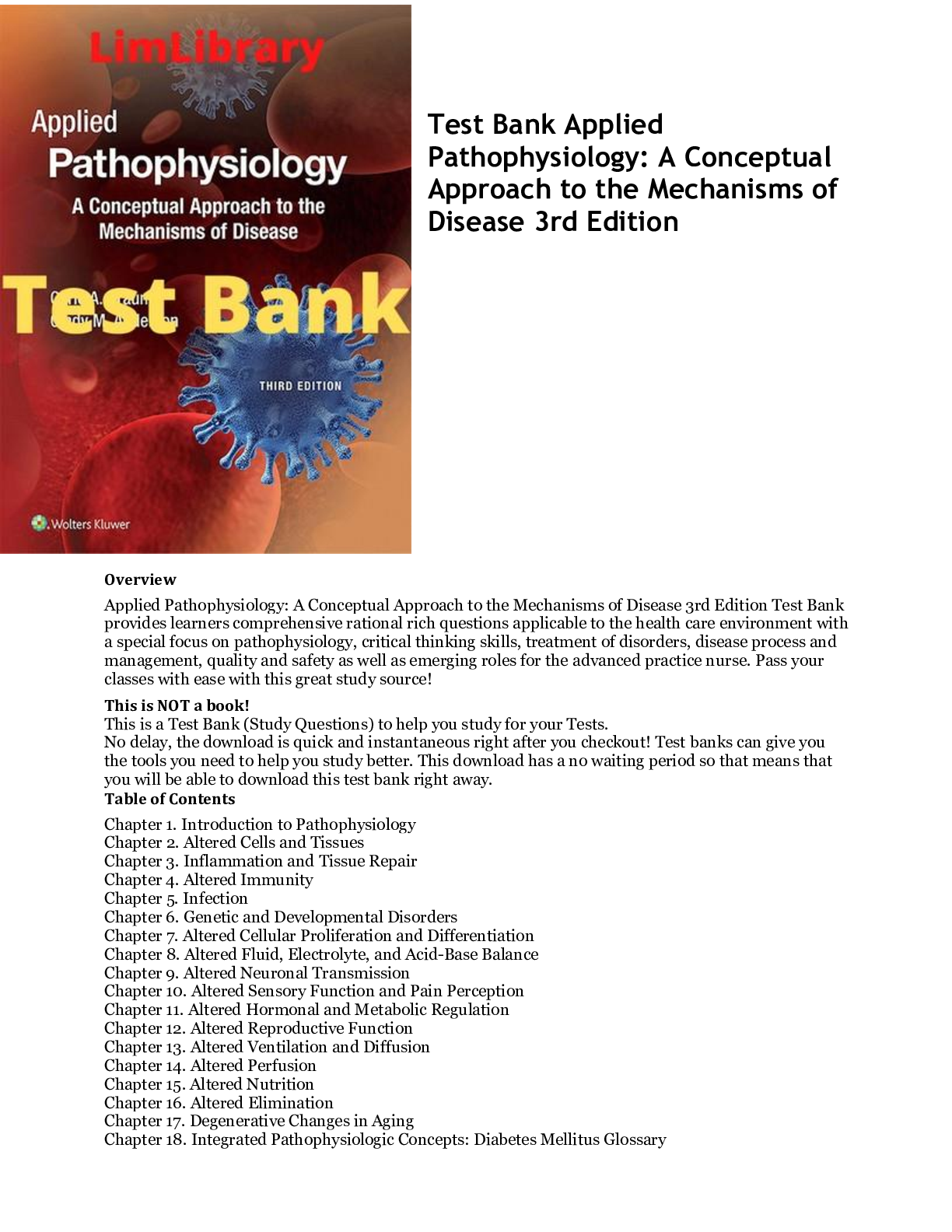

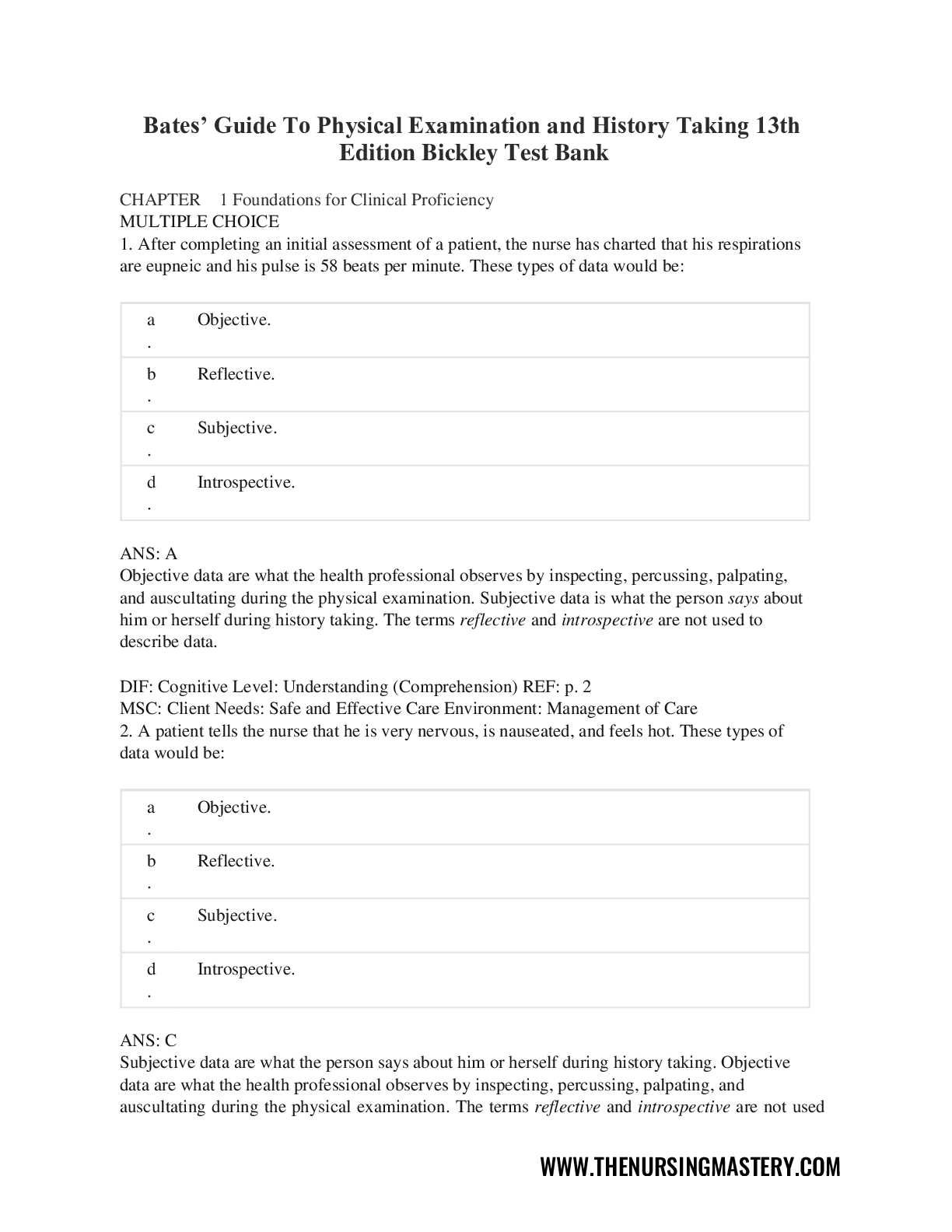
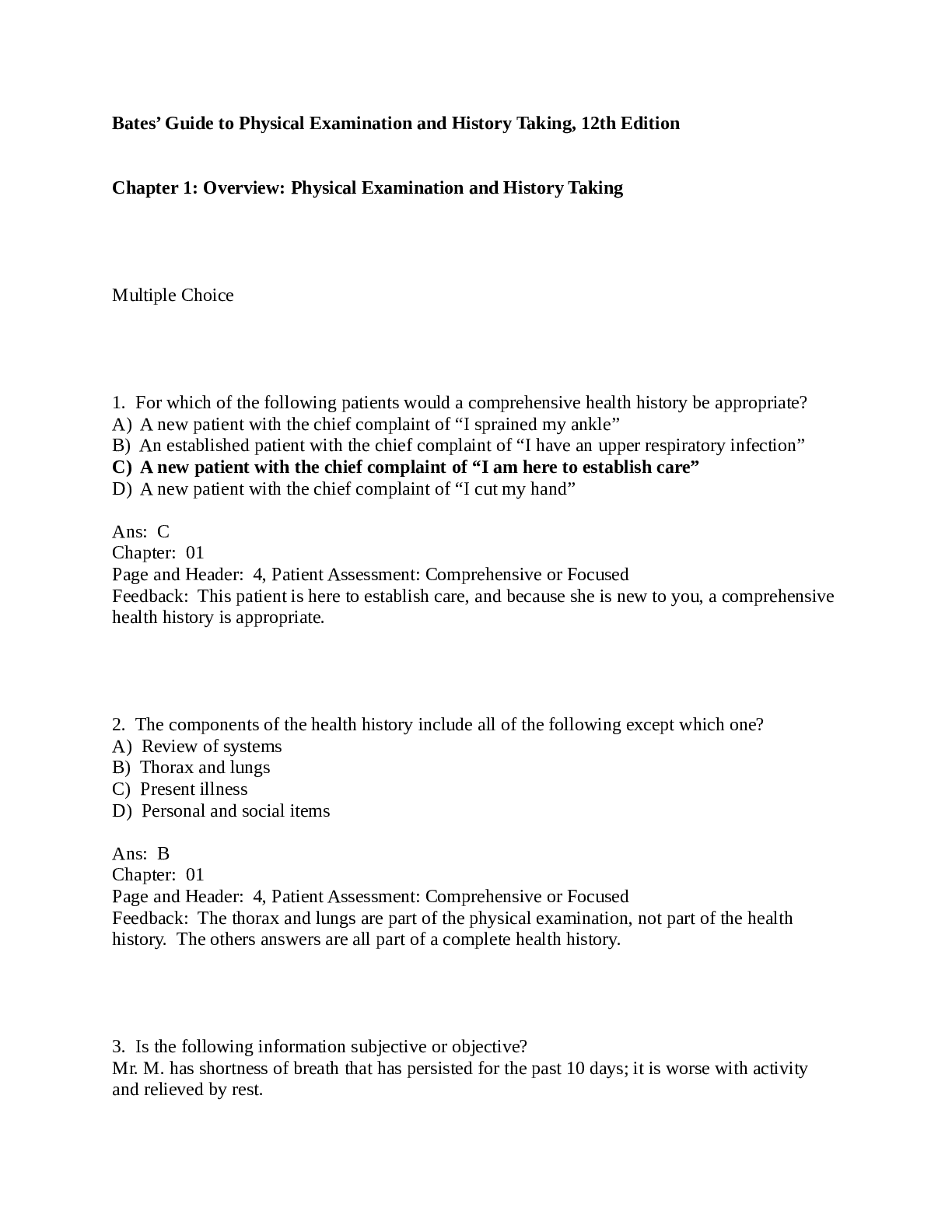
.png)
.png)
.png)

